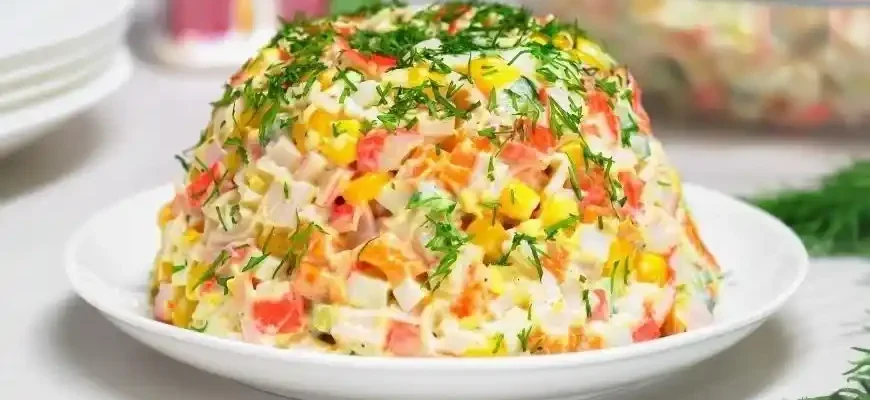Crab cakes are one of those dishes that can elevate a simple meal into a gourmet experience. Whether you’re making them for a family dinner or a special celebration, a well-made crab cake is something everyone can enjoy. But here’s the kicker: making perfect crab cakes is not as hard as it sounds. In fact, with a little know-how, you can prepare restaurant-quality crab cakes right in your own kitchen. Let’s dive into how to make these delicious treats, and I’ll give you tips and tricks along the way.
A Brief History of Crab Cakes
Before we get into the nitty-gritty of making crab cakes, let’s take a moment to appreciate their history. Crab cakes are typically associated with Chesapeake Bay, an area along the mid-Atlantic coast of the United States. However, similar seafood cakes have been made around the world for centuries. The Chesapeake version, however, has become the most iconic. In fact, crab cakes are a staple in Maryland and Virginia, where blue crabs are abundant.
What You Need to Know About Crab Cakes
Making crab cakes is part science and part art. While the ingredients and steps are simple, the balance of flavors and textures is key. Let’s break it down.
The Ingredients
You don’t need a lot to make great crab cakes, but quality matters. Here’s a breakdown of the essentials:
- Crab Meat: The star of the show. Fresh is best, but if you’re using canned or frozen crab, look for high-quality options. Lump crab meat is often preferred because it provides the best texture, though some people also use claw meat for a stronger flavor.
- Breadcrumbs: These act as the binding agent for your crab cakes. Some people prefer panko for extra crispness, but plain breadcrumbs will also work fine.
- Eggs: These are crucial for binding the crab and other ingredients together.
- Mayonnaise or Mustard: These provide moisture and creaminess. Some recipes use Dijon mustard for a little tang.
- Seasonings: Old Bay Seasoning is a classic choice for crab cakes, but you can mix it up with garlic, lemon zest, parsley, and even a dash of hot sauce. The flavor profile is up to you, but keep it balanced.
- Vegetables (optional): Some crab cakes include finely chopped bell peppers, celery, or onions for added flavor and texture. But, purists might argue that simple is better.
- Butter or Oil: For frying. This gives the crab cakes that lovely golden-brown crust.
The Process
- Prepare the Crab Meat: Start by carefully picking through your crab meat to remove any shells or cartilage. If you’re using canned or frozen crab, drain it well to remove excess liquid.
- Make the Mixture: In a large bowl, combine the crab meat with the breadcrumbs, egg, mayo (or mustard), and seasonings. Gently mix everything together—you don’t want to break up the crab too much.
- Shape the Cakes: Once your mixture is combined, form it into small patties. The size is up to you, but traditional crab cakes are about the size of a hockey puck.
- Chill the Cakes: For best results, chill the crab cakes in the fridge for at least 30 minutes before cooking. This helps them hold together during frying and enhances the flavor.
- Cook the Crab Cakes: Heat butter or oil in a large skillet over medium heat. Fry the crab cakes for about 3-4 minutes on each side, or until golden brown and crispy. You want them to be cooked through but still juicy on the inside.
- Serve: Serve the crab cakes hot with a squeeze of lemon, a side of tartar sauce, or even a spicy remoulade. Pair with a crisp salad or some sautéed vegetables for a complete meal.
Variations and Tips
Now that we’ve covered the basics, here are a few variations and additional tips to help you perfect your crab cakes:

- Baked Crab Cakes: If you’re not keen on frying, you can bake your crab cakes. Preheat your oven to 375°F (190°C), place the cakes on a baking sheet, and bake for about 15-20 minutes or until golden brown. Just keep in mind that baking won’t give you the same crispy crust that frying does, but it’s a healthier alternative.
- Seasoning Substitutes: While Old Bay is classic, you can experiment with your seasonings. Try adding a little smoked paprika, garlic powder, or cayenne for a bit of heat.
- Gluten-Free Option: If you’re avoiding gluten, swap out the breadcrumbs for gluten-free breadcrumbs or crushed rice crackers. There are also gluten-free panko options available.
- Healthier Options: For a lighter version, you can use Greek yogurt instead of mayonnaise. This gives the cakes a tangy flavor and a lower-fat option.
- Making Ahead: Crab cakes can be made ahead of time and stored in the fridge for a day or two. Just be sure to keep them covered tightly. You can also freeze them for up to 3 months, which makes for an excellent meal prep option.
Common Mistakes to Avoid
- Overmixing the Crab: One of the biggest mistakes when making crab cakes is overmixing the crab meat. Crab cakes are all about keeping the crab’s delicate texture intact, so mix the ingredients gently.
- Using Too Much Filler: While breadcrumbs are essential for binding, you don’t want to overload your crab cakes with them. The goal is to highlight the crab, not hide it.
- Not Chilling the Cakes: Skipping the chilling step can result in crab cakes that fall apart during cooking. Take the time to let them firm up in the fridge.
Global Perspectives on Crab Cakes
Crab cakes might be most famous in the U.S., but variations of seafood cakes are made all over the world. In Southeast Asia, for instance, crab cakes often have a more aromatic profile with ingredients like lemongrass, ginger, and cilantro. In the Caribbean, you might find crab cakes spiced with allspice and scotch bonnet peppers for a fiery kick.
Here are a few thoughts from around the globe on crab cakes:
- Mary, 55, USA: “I’ve been making crab cakes for years. I love adding a little lemon zest and a pinch of cayenne. For me, the key is not overcooking them. They should be crispy on the outside but still moist and tender inside.”
- Takahiro, 42, Japan: “In Japan, we make crab cakes with a light, tempura-style batter. It’s a bit different, but the flavors are still delicate and delicious. The best part is using fresh crab straight from the local market.”
- Amina, 28, Egypt: “We don’t have crab cakes in Egypt, but I love trying them when I travel. The ones I’ve had are a bit firmer than the ones I see in American recipes. I wonder if the mix of breadcrumbs makes them soft or dense.”
- Luis, 60, Spain: “In Spain, we use a similar technique to make ‘tortillitas de camarones’ with shrimp. Crab cakes remind me of that, but I prefer a bit more garlic and olive oil in mine.”
- Sarah, 34, Canada: “In Canada, we use snow crab or even lobster for our crab cakes. I love the idea of using multiple types of seafood to create a more complex flavor profile.”
Conclusion: Perfect Crab Cakes, Your Way
Making crab cakes is not just about following a recipe—it’s about finding the balance of flavors and textures that works for you. Whether you prefer a crispy, fried cake or a lighter, baked version, the key is to keep it simple and let the quality of the crab shine through. So next time you’re in the mood for something indulgent, grab some fresh crab and start cooking. You’ve got this!
Happy cooking!









